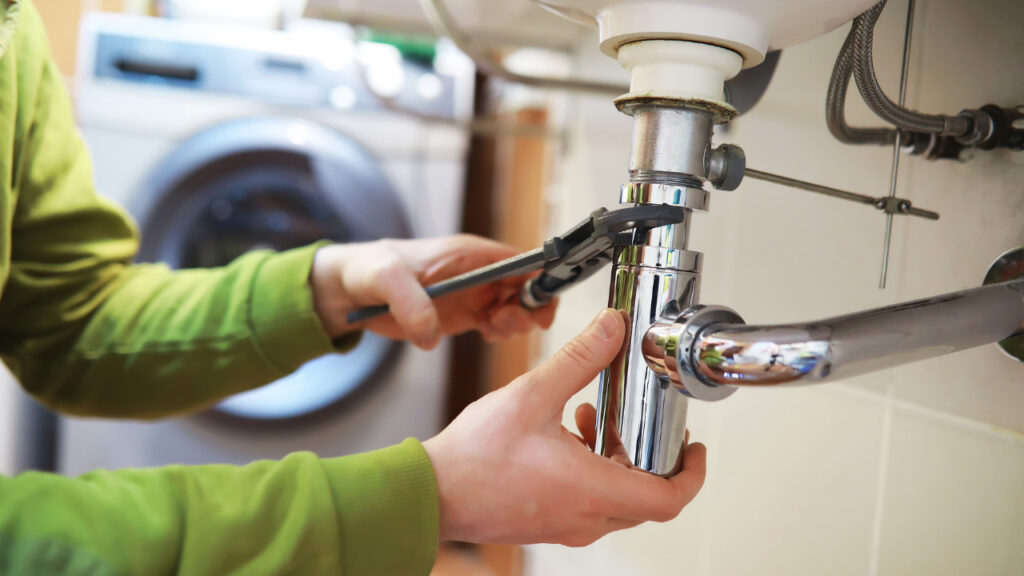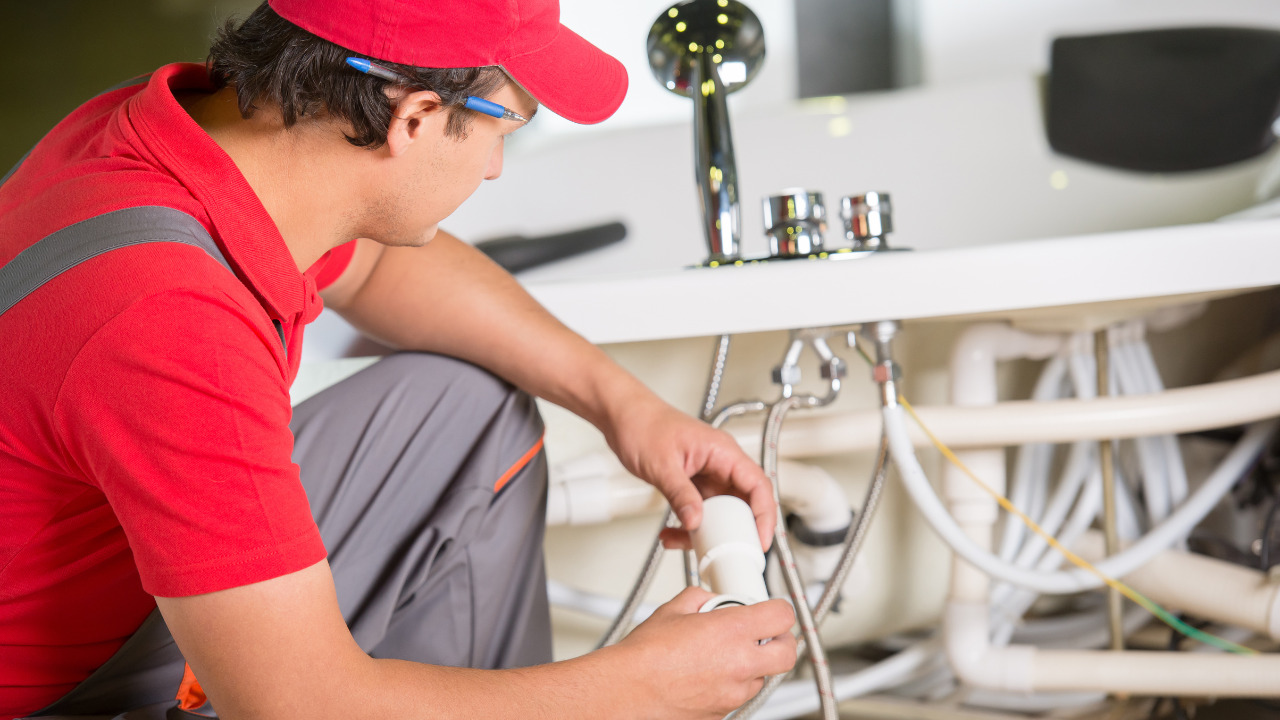A kitchen faucet is an important yet one of the most underrated elements in a kitchen. It is available in a variety of designs, materials, and features to accommodate various types of kitchen layouts and user preferences. It may need repairing or replacement over time, which can be a daunting process if you don’t have the appropriate knowledge and expertise.
This detailed guide will teach you how to remove kitchen faucets, ensuring a smooth and trouble-free experience.
Table of Contents
Tools to Use for Removing Kitchen Faucet
Before we dive into the removal process, gather the following tools and materials to ensure a seamless operation:
- Adjustable wrench
- Basin wrench
- Screwdrivers (flathead and Phillips)
- Penetrating oil (if your faucet is corroded)
- Towel or rag
- Bucket or container
- Plumber’s tape (to seal the new faucet, if required)
10 Easy Steps to Remove Kitchen Faucet

If you are thinking about changing a kitchen faucet, removing the former version is the first thing to consider. This is necessary to check it for any damages or repairs. Gather the tools and materials and start removing the kitchen faucet by following the steps given below:
1. Identify Kitchen Sink Faucet Type
You should identify the type and design of your kitchen sink faucet before removing an old kitchen faucet, whether for installing a new set or repairing an old one. Some kitchen faucets have one handle and sometimes two handles. Therefore you may need different set of tools to remove one handle or two handle sink faucet.
2. Put on Safety Gears
Experts can easily remove kitchen faucets without a basin wrench but even then they have the right safety gears to use.
Safety gears are necessary to avoid direct interaction with grease that will be stuck on the faucet pipes. Putting on gloves and a face mask will help you to save yourself from germ and humidity effects.
3. Turn Off the Water Supply
Begin by turning off the kitchen faucet’s water supply. Look beneath the sink for the hot and cold water shut-off valves. Close the valves by turning them clockwise. If your sink does not have these valves, you must switch off the main water supply to the house. Turn on the tap and let it flow until the water pressure is totally relieved to prevent any residual water from producing a problem during the removal process. Wait for a few seconds afterwards so that there’s no remaining water in the pipes. If the valve is not shut-off properly check the valve under the sink again.
4. Set Up the Work Area
Place a towel or cloth in the sink to protect it from any tools or pieces that may fall during the removal procedure. Place a bucket or container beneath the sink to catch any water that may leak while disconnecting the supply lines. Arrange the tools in chronological order the way you will need them to remove kitchen faucet. Make sure you have a complete sets of wrench.
5. Disconnect Water Supply Lines
Carefully detach and disconnect the water supply lines from the hot and cold handles of the faucet with an 6-inch adjustable wrench. Anticlockwise turn the nuts until they are entirely removed. Expect some water to drip from the disconnected lines, which is why a pail or container is required.
If the hose is old, you may have to replace them altogether. However, while removing the hose, you may need to support the valve, if its old. Use a set of pliers and support the valve using your hands. With the help of pliers you can loosen up the braided hoses to remove the brass nuts.
6. Turn Off the Sprayer
A sprayer must be disconnected before removing the handles, if you have any. Locate the sprayer hose where it joins to the tap body under the sink. Remove the sprayer from the sink area by unscrewing the hose using an adjustable wrench.
Usually the hose has the quick-connect fittings so just pinch the hose fitting to loosen it up.
7. Disconnect Faucet Handle
Most kitchen faucets feature a single handle or separate hot and cold water handles. Look for a little cap or cover on the handle’s base to remove the handle(s). Gently push it open with a flathead screwdriver to reveal the handle’s holding screw. Unscrew it with the suitable screwdriver and then lift off the handle(s). Keep all small pieces, including screws and caps, in a safe location for reassembly.
8. Remove Faucet Mounting Nut
Under the sink, locate the faucet mounting nuts that hold the faucet to the sink. To loosen them, use a basin wrench, which allows for easier access to the nuts in tight spots. To loosen, grasp the nuts with the basin wrench and crank them anticlockwise. You may unscrew them by hand once they are loose enough. If your tap has more than one handle, repeat this procedure for each mounting nut. If the kitchen faucet has a sprayer you will need to repeat the process. Grip the base of the sprayer with your free hand to hold it in place while using the tongue-and-groove pliers.
9. Lift the Tap and Sprayer Out
Lift the old kitchen tap and sprayer from the sink with all of the connections unfastened and unplugged. While at it take care not to damage any surrounding fixtures or the sink itself. If the tap appears to be stuck, look for any hidden mounting nuts or screws that may still be in place.
Or you can wiggle it carefully to remove the tap and sprayer without any issue. After that you may notice a plastic base underneath the faucet. This may vary according to the faucet model installed in your kitchen. So do not throw it away in case you have to use it.
10. Clean Faucet Residue
After properly removing the old tap, carefully clean the sink area along with leftover residue from the tap and other parts of the faucet. To ensure a clean surface for installing the new tap, remove any dirt, grime, or old plumber’s putty. This is a critical step in ensuring a secure and leak-free installation.
You can clean the gunk with a bit of vinegar used on a soft rag cloth. Leave it on the material for a while to clean the stubborn buildup, in case of hard water stain. Repeat the step as much as needed until the kitchen faucet is clean.
Common Reasons to Remove Kitchen Faucets
There are many reasons to remove a kitchen faucet; a few common ones are discussed below:
Upgrading to a New Model
Homeowners may decide to replace their old kitchen faucet with a newer and more modern type which is perfect for a kitchen remodeling project. Upgrading the kitchen faucet can provide multiple benefits, including increased water efficiency, enhanced performance, and modern aesthetics that complement the entire kitchen design.
Repairing Faulty Components
Leaking kitchen faucets, worn-out gaskets, or faulty handles are some of the common problems you face over time. In such circumstances, removing the present faucet is required to gain access to and replace the defective components. Repairing the faucet ensures that it works properly, avoiding water waste and any water damage.
Renovation and Redesign
Homeowners can choose to change the overall appearance and style of their kitchen space for upgradation.s. One of the many kitchen renovation tips includes removing a faucet. Or sometimes redesigning the countertops with a brand new type of faucet.
Removing Your Kitchen Faucet Made Easy!
Removing a kitchen tap may appear to be a difficult chore at first, but with the correct equipment, materials, and a well-guided approach, you can complete it with ease. You’ll be able to successfully remove your old kitchen tap by following the thorough step-by-step guide provided, allowing you to either install a new one or perform necessary maintenance. Remember to be patient, cautious, and thorough throughout the process, and you’ll soon have a new and working kitchen tap that satisfies all of your requirements.





